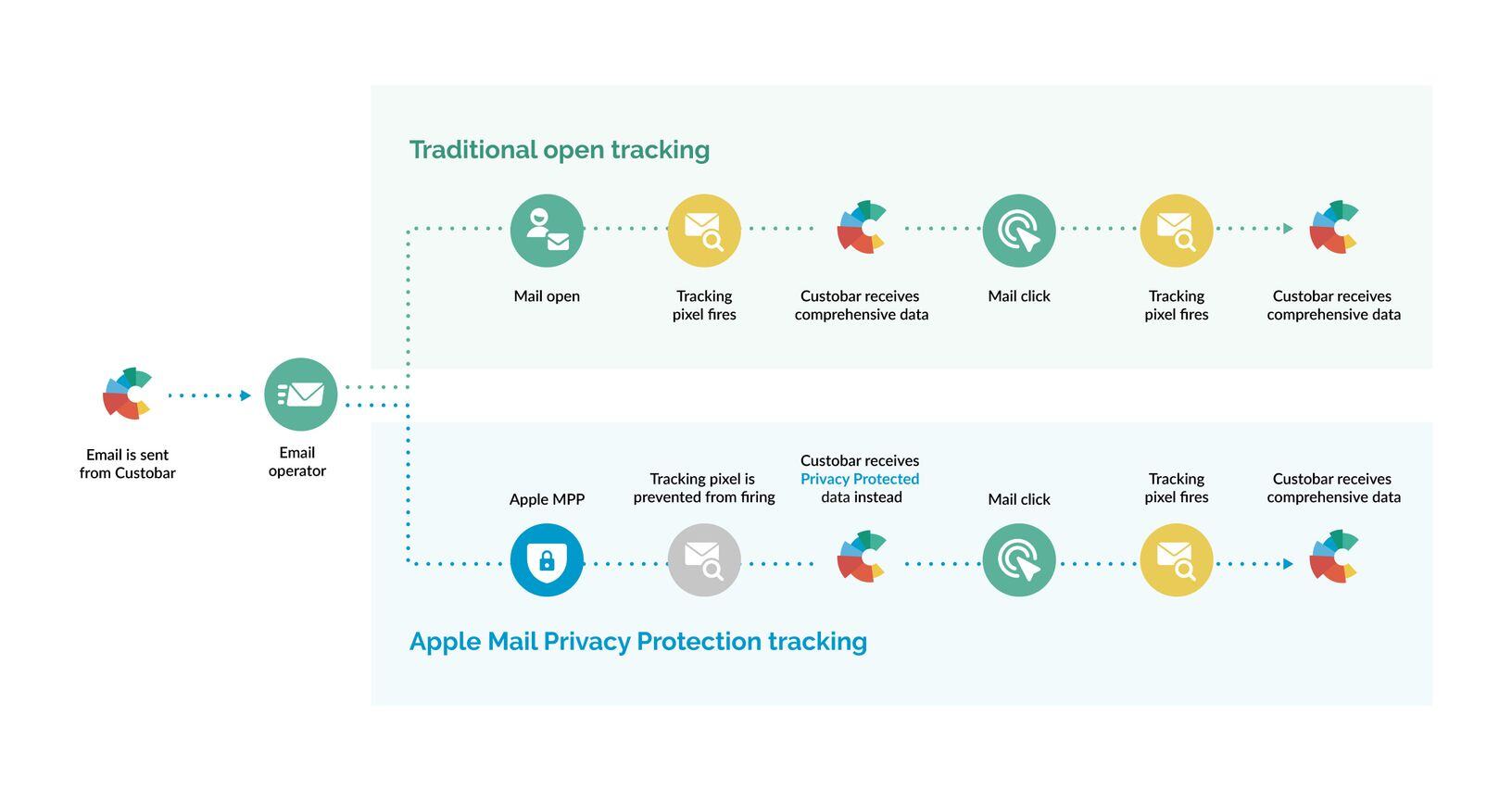Email marketing has long been a staple in the world of digital communication. It allows businesses to reach their audience directly, delivering valuable content and promotions to potential customers. One of the essential metrics for email marketers is open tracking, which provides insights into the success of email campaigns. However, in recent times, the landscape of open tracking has been reshaped by Apple's Mail Privacy Protection (MPP), altering how we interpret and utilize this data.
Traditional Open Tracking
In the past, open tracking relied on the firing of a tracking pixel. When an email was opened, this tiny invisible pixel embedded within the email would trigger a request to a server, recording the opening. This straightforward mechanism enabled the measure of reach and engagement.
Apple MPP's Impact
With the introduction of Apple's Mail Privacy Protection, the game has changed. MPP aims to protect end-user privacy by blocking the automatic loading of tracking pixels. As a result, the traditional method of tracking opens is no longer as reliable as it once was. To users, it appears as though every email open is a machine-generated action, a move to safeguard their privacy from invasive data collection.

Because of this change, we face the challenge of distinguishing between actual human opens and machine opens. As a response to the changes brought by MPP, we have started reporting two types of opens: human opens and machine opens. Human opens refer to those instances where a user intentionally opens the email. Machine opens, on the other hand, encompass a broad category that includes both automated actions, for example, from a scan for virus returning a false-positive open, and suspected privacy-protected human opens, which are indistinguishable from machine opens.
We initially decided to remove the machine opens from the open rate calculation. However, the large volume of Apple email client users meant the open rates were dropping significantly, and a lot of real engagement was removed from the reporting.
Our decision to reverse the previous change:
The information above as well as the feedback we received from some of you convinced us that our initial decision was not the correct course of action. Thus we decided to reverse the previous change and actually bring back the Open rate that would be calculated using "All opens", including machine opens. The false positive coming from MPP engagements were too numerous to be safely ignored, and in testing, we could confirm that real human engagement from Apple users would appear as machine opens to the system.
In the future: Leveraging Human Clicks
While Apple MPP affects open tracking, it doesn't interfere with click tracking. We can still track user interacting with the email content and clicking on links. This provided us with the potential solution on how to address this situation in the most satisfying way: human clicks can be used to infer the count of machine opens that may, in fact, be genuine human opens.
The logic is as follows:
- By looking at non-privacy protected user's "Click to Open rate" (CTOR),
- And assuming that the CTOR is realistically fairly similar for Apple users who benefit from Mail Privacy Protection,
- We can apply that same CTOR to the machine opens which returns an inferred count of "real human privacy protected opens"
Looking at a real-life example campaign with 6,458 recipients, the total Opens count was 2,615. Out of those, 817 were privacy protected opens. The CTOR for non-privacy protected users was 22.1% (397 clicks for 1798 Opens)
Taking all the Open events gave an open rate of 40.5%, which may be too optimistic. Filtering out all "machine-opens" gave an open rate of 27.8%, which is too pessimistic and below this client's usual benchmark. Estimating the true open rate from the non-privacy protected CTOR of 22.1% gives the "adjusted open rate" 33.8%, which is not only pretty realistic but it fell nicely close to the usual benchmark figure for this Custobar user.
To conclude, by adjusting the open rates using the human clicks, we might be able to offer insights into the engagement and interest level of your audience while respecting the privacy of the end users. This information would help you make informed decisions about your email marketing strategy and content but ultimately, you would remain the judge of whether you agree with our rationale and decide to use the adjusted open rate or filter out all machine opens.
We care about your feedback! So please feel free to let us know how you feel about this idea by reaching out to our team and if you have any questions, our support@custobar.com is here for you.
.jpg)



